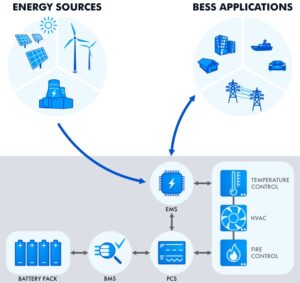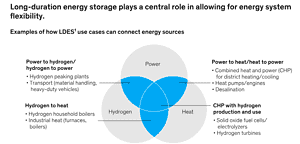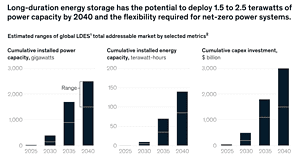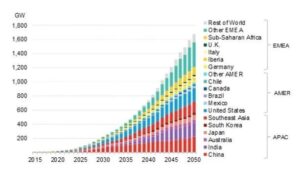Long-duration energy storage
As the world transitions to decarbonized energy systems, emerging long-duration energy storage technologies will be critical for supporting the widescale deployment of renewable energy sources. All this is closely related to battery energy storage.
Energy situation
How to limit the rise in global temperatures by curbing emissions of greenhouse gases? The power-generation sector has a central role to play. The sector accounts for a third of global carbon emissions, and decarbonisation of the rest of the economy vitally depends on the growing demand for renewable electricity.

Most projections suggest that in order for the world’s climate goals to be attained, the power sector needs to decarbonize fully by 2040.
And the good news is that the global power industry is making giant strides toward reducing emissions by switching from fossil-fuel-fired power generation to predominantly wind and solar photovoltaic (PV) power. However, the rising share of renewables in the power mix brings with it new challenges. Not least of these are the structural strains on existing power-generation, transmission, and distribution infrastructure.
About LDES
What is LDES?
One answer, explored in a new industry report, is long-duration energy storage (LDES). The report, authored by the LDES Council. It argues that timely development of a long-duration energy-storage market with government support would enable the energy system to function smoothly with a large share of power coming from renewables, and would thus make a substantial contribution to decarbonizing the economy.

LDES encompasses a group of conventional and novel technologies, including mechanical, thermal, electrochemical, and chemical storage, that can be deployed competitively to store energy for prolonged periods and scaled up economically to sustain electricity provision, for days or even weeks.
It offers a way of integrating and providing flexibility to the entire energy system, comprising power, heat, and other forms of energy. The various novel LDES technologies are at different levels of maturity and market readiness, they are attracting unprecedented interest from governments, utilities, and transmission operators.
Advantages of LDES
By 2040, LDES deployment could result in the avoidance of 1.5 to 2.3 Gton of CO2 equivalent per year, or around 10 to 15 percent of today’s power sector emissions.
The scale of these numbers reflects the multiple use cases for LDES technologies and the central role they can play in balancing the power system and making it more efficient. These include support for system stability, firming corporate power-purchase agreements, and optimization of energy for industries with remote or unreliable grids.
Another key benefit of LDES is that it entails low marginal costs for storing electricity: it is widely deployable and scalable; and it has relatively low lead times when compared with the upgrading of T&D grids. This makes it competitive with other forms of energy storage, and economically preferable to expensive and protracted grid upgrades.
LDES investment market
Investment in the LDES is rising fast: more than 5GW and 65 GWh of LDES capacity has been announced or is already operational.

Development prospect
The benefits to society of large-scale LDES deployment as solar PV and wind become the dominant sources of power are obvious. So while novel LDES technologies are still nascent, deployment could accelerate rapidly in the next few years.
This could be a highly attractive market for investors: a sizeable new industry providing 1.5 to 2.5 TW of storage capacity. The prize is within reach, and the time to seize it is now.


